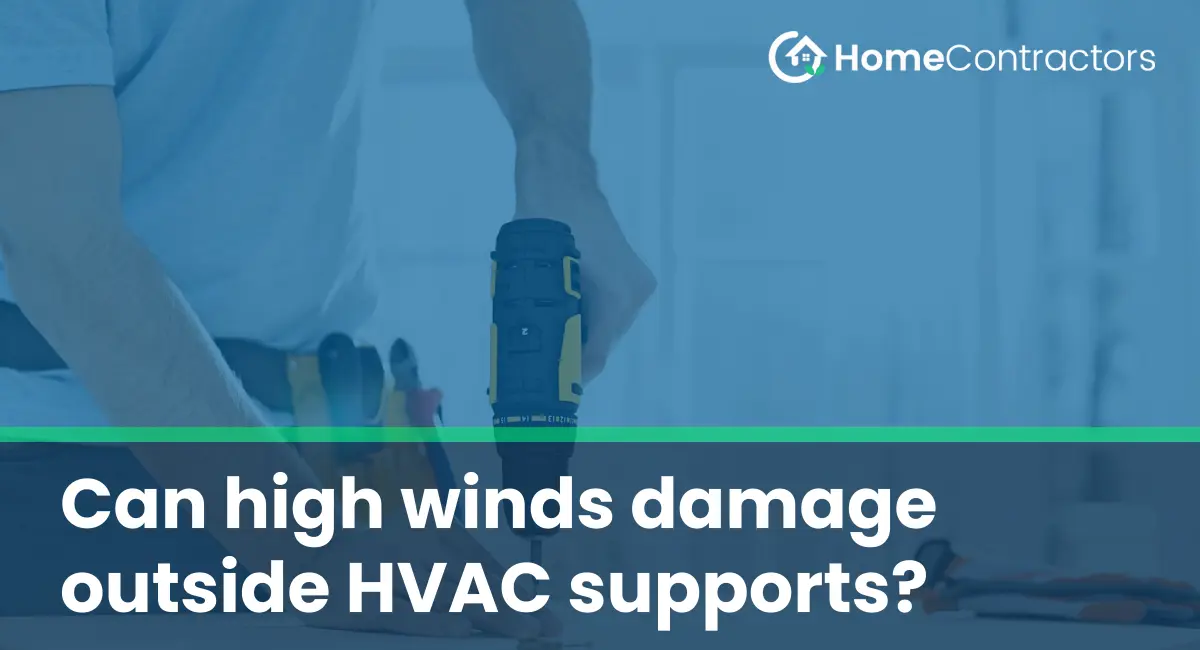Outside HVAC (Heating, Ventilation, and Air Conditioning) units are designed to withstand different weather conditions, including high winds. However, extreme wind events can pose a risk to these units, potentially damaging their supports and jeopardizing their performance. In this article, we will explore the impact of high winds on outside HVAC supports and discuss measures to mitigate potential damage.
- Understanding the Risks:
- 1 Wind Force and its Effects:
High winds generate powerful forces that can exert excessive pressure on HVAC equipment. The force of the wind is typically measured in pounds per square foot (PSF). For instance, gusts during a severe storm can exceed 70 PSF, which poses a significant threat to equipment that is not adequately secured.
1.2 Vulnerable Components:
Outside HVAC units comprise various components, including condensers, air handlers, and rooftop units. These components rely on various supports, such as metal brackets or concrete slabs, to maintain stability. In extreme weather conditions, inadequate or poorly installed supports can become vulnerable points, risking damage to the HVAC system.
- Potential Consequences of High Winds:
- 1 Structural Damage:
High winds can exert lateral and uplift forces on HVAC supports, potentially causing bending, warping, or even complete detachment of support structures. This structural instability can lead to misalignment issues, leaks, and compromised functionality of the HVAC equipment.
2.2 Disrupted Performance:
When outside HVAC supports are damaged, it can result in misaligned or tilted equipment. Consequently, the air circulation, heat transfer, and overall efficiency of the HVAC system may be negatively impacted. Reduced performance can lead to higher energy consumption, increased maintenance costs, and a decrease in indoor comfort levels.
- Strategies to Mitigate Wind Damage to HVAC Supports:
- 1 Professional Installation:
To ensure proper support for outside HVAC units, it is essential to hire qualified HVAC professionals with experience in high-wind areas. These experts can make informed assessments of the appropriate supports and secure them through thorough installation.
3.2 Anchoring Systems:
Anchoring systems such as hurricane straps or tie-downs can offer additional reinforcement for HVAC supports. By securing the unit to a solid base or roof structure, these systems can significantly increase stability in the face of strong winds.
3.3 Windbreakers or Barriers:
Installing windbreakers or barriers can divert the wind’s path away from the HVAC unit, reducing the force acting on the supports. Fencing, hedges, or specially designed windbreak walls can be effective measures to protect outside HVAC units from direct wind impact.
3.4 Regular Maintenance and Inspection:
Scheduled maintenance and inspection of outside HVAC units are crucial. Technicians can identify early signs of support damage, such as loose bolts, rust, or corrosion, and address them promptly. Additionally, inspections can verify the stability of supports and identify any potential areas of concern that may need reinforcement.
While outside HVAC supports are designed to withstand varied weather conditions, high winds remain a significant threat. Adequate measures, such as professional installation, anchoring systems, windbreakers, and regular maintenance, are essential to protect the stability and functionality of outside HVAC units. By understanding the risks associated with high winds and taking proactive steps, both homeowners and commercial building owners can ensure the longevity and efficiency of their HVAC systems.
